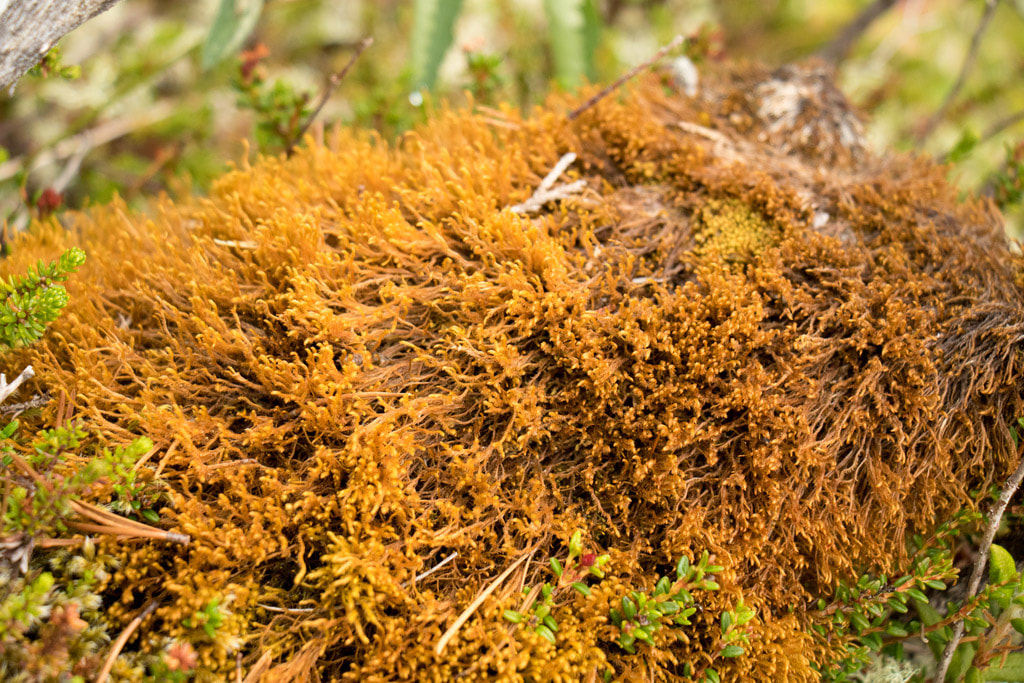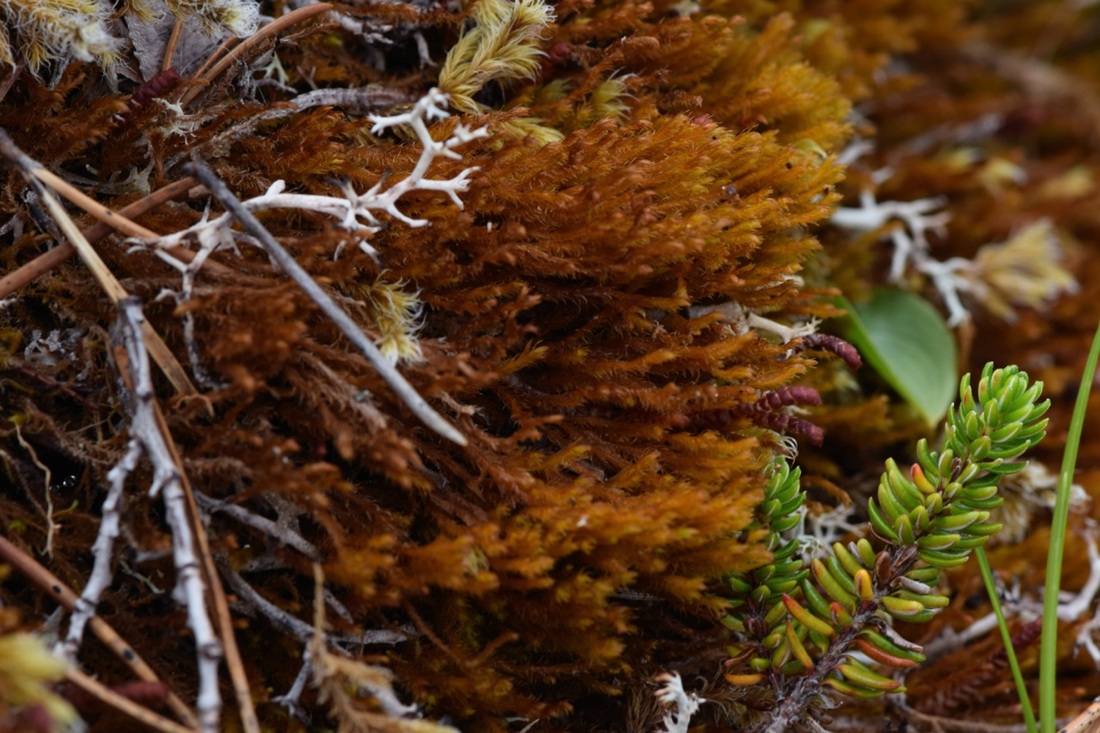Common scissor-leaf liverwort • Herbertus aduncus, Herberta aduncus
Identification
This liverwort has rusty-brown to reddish leaves that are very moss-like and easily misidentified. The two sharp points of each leaf give it the name 'scissor-leaf', but they are hard to see because they press very closely to the stem. The stems are thin and thread-like with little to no branching. They most commonly grow from 2-9 cm and can have a wiry, upright appearance. Generally, scissor-leaf liverwort forms loose clumps or mats on a range of surfaces.
Habitat & Range
Scissor-leaf liverwort has a very diverse habitat preference – from tree trunks and branches to ground cover in open peatlands, tundras, and foggy forests. It has a huge range and occurs primarily in maritime climates. In British Columbia it is found along the length of the coast line.
Similar Species
Because of the loose growth and upright structure of the stems, scissor-leaf liverwort can be confused with a variety of mosses. However, the leaves (when pulled away from the stem) are two-lobed and shaped like scissors – a characteristic never shared by mosses.
When growing within a clump of other mosses and liverworts, scissor-leaf liverwort can be confused with three-toothed whip liverwort (Bazzania tricrenata), which generally has thicker stems and a reverse-shingle leaf pattern.
iNaturalist
https://www.inaturalist.org/taxa/163684-Herbertus-aduncus
This liverwort has rusty-brown to reddish leaves that are very moss-like and easily misidentified. The two sharp points of each leaf give it the name 'scissor-leaf', but they are hard to see because they press very closely to the stem. The stems are thin and thread-like with little to no branching. They most commonly grow from 2-9 cm and can have a wiry, upright appearance. Generally, scissor-leaf liverwort forms loose clumps or mats on a range of surfaces.
Habitat & Range
Scissor-leaf liverwort has a very diverse habitat preference – from tree trunks and branches to ground cover in open peatlands, tundras, and foggy forests. It has a huge range and occurs primarily in maritime climates. In British Columbia it is found along the length of the coast line.
Similar Species
Because of the loose growth and upright structure of the stems, scissor-leaf liverwort can be confused with a variety of mosses. However, the leaves (when pulled away from the stem) are two-lobed and shaped like scissors – a characteristic never shared by mosses.
When growing within a clump of other mosses and liverworts, scissor-leaf liverwort can be confused with three-toothed whip liverwort (Bazzania tricrenata), which generally has thicker stems and a reverse-shingle leaf pattern.
iNaturalist
https://www.inaturalist.org/taxa/163684-Herbertus-aduncus
References
Ellis, S. Herbertus aduncus. Introduction to Bryophytes. Biology 321, Department of Biology, University of British Columbia, Vancouver. Accessed 12/08/2014.
NatureServe. (2014). Herbertus aduncus - (Dickson) S.F. Gray. NatureServe Explorer. Accessed 12/08/2014.
Pojar, J. and MacKinnon, A. (1994). Plants of Coastal British Columbia. Vancouver, BC: Lone Pine Publishing. P. 438.
Authors and editors of page
Nancy Shackelford and Brian Starzomski (2014).
Ellis, S. Herbertus aduncus. Introduction to Bryophytes. Biology 321, Department of Biology, University of British Columbia, Vancouver. Accessed 12/08/2014.
NatureServe. (2014). Herbertus aduncus - (Dickson) S.F. Gray. NatureServe Explorer. Accessed 12/08/2014.
Pojar, J. and MacKinnon, A. (1994). Plants of Coastal British Columbia. Vancouver, BC: Lone Pine Publishing. P. 438.
Authors and editors of page
Nancy Shackelford and Brian Starzomski (2014).







